And now for something totally different: the Ripper 29, produced by Slingshot Bikes. It’s so different that I’m not even sure where to beginthis post. I mean, it’s got a cable instead of a downtube. And there’s a spring. Andfiberglass. What’s going on here?
The Ripper 29 is a very unique looking bike.
Components
The Ripper is Slingshot’s aluminum XC bike. Obviously, the Ripper 29 isthe 29er version, and that’s what I have to review. The frame retails for $1,099 and can be purchased directly from Slingshot. They also offer complete bikes and you can get them with whatever components you want. If you don’t care to pick and choose every single part they also offer several stock build options. I’ll be reviewing the frame, not this particular build, since you can get the bike however you want. Mine is a 20″ frame, has a White Brothers Rock Solid rigid carbon fork, Velocity Blunt wheels, Schwalbe Racing Ralph tires on both ends, a 3×9 mostly SRAM drivetrain, and a very slick looking (mainly carbon) FSA SL-K cockpit. It weighs in at 25.96lbs ready to ride,including the water bottle cage and the Crank Brothers Candy pedals.
The Boom Tube is big, beefy, and super stiff.
Now, About That Cable
The cable is the heart of the bike, and what makes it so different from everything else on the trail. Instead of a downtube there is a stainlesssteel cable with a spring. The top tube (or BoomTube as they call it) is connected to the rear triangle via a flexible fiberglass board called the Dogbone Flexboard. The cable, spring, and flexboard are part of the Sling Power system – you can read all the details about how it’s supposed to work here. The short version is it’s supposed to do two things:
1 -Store some pedal input and release it during the dead portion of the pedal stroke, providingsmoother power delivery
2 – Get small boosts of speed riding over bumps
Close up of the spring. The bracket surrounding it allows the cable to pass through the spring and cause it to work in compression.
Skeptical
To be honest, looking at the bike and the claims of Sling Power, it’s hard not to be skeptical. For one thing it looks like the bike would simply fold in half when you get on the brakes hard – cables don’t provide much resistance to compressive forces after all. The bike looks so radically different from anything else on the market it just makes you wonder. That said, Slingshot Bikes have been around since 1982, so if it’s all just smoke and mirrors you’d think they’d be long gone by now, so maybe there’s something to it.
The Dogbone Flexboard holds the Ripper’s front and rear halves together.
I’ve had one real trail ride on the bike so far, and I’ve got to say, the Ripper doesn’t ride like it looks. I thought it would buck up and down, but it’s surprisingly stiff and rides, well, like a bike, not really any funny business going on. In fact, one of the first things I did after unpacking the bike was to do a stoppie and see if it would fold up on me. As you can see below, that Dogbone Flexboard is pretty dang stiff! The carbon fork flexed a whole lot more than the frame did. I’ll be riding this bike hard for the next month or so and will report back with a final review then. I may even let a few other local riders try it out and get their thoughts on it.
The fork flexes a lot, but the frame is way stiffer than I imagined it to be. Not sure why I look like Quasimoto…
Special thanks to Slingshot for lending me the bike for the review.
Photo Gallery
The lower cable connection. The seat tube is a big beefy T-shaped tube.
I like the clean, simple, understated graphics.
The headtube badge is pretty sweet too.
Tire clearance isn’t spectacular, but should be plenty for the bike’s XC intentions.
One drawback of losing the downtube: only one water bottle cage mount.













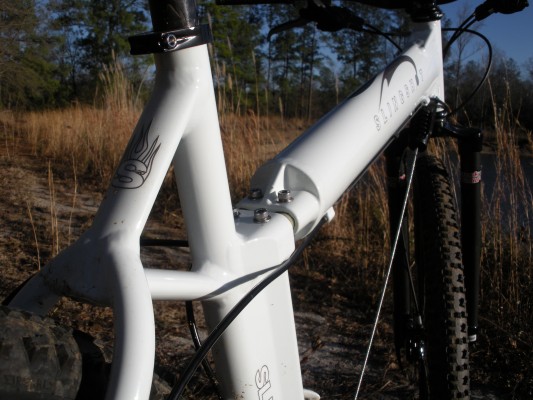

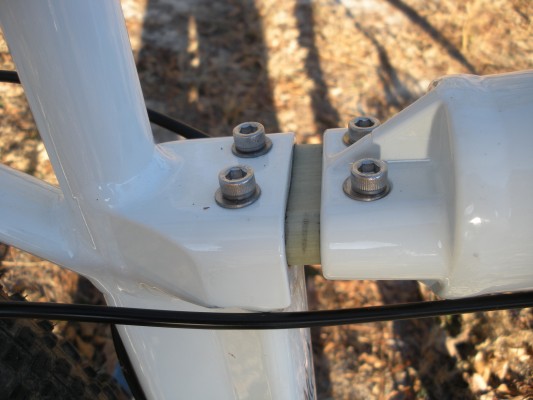

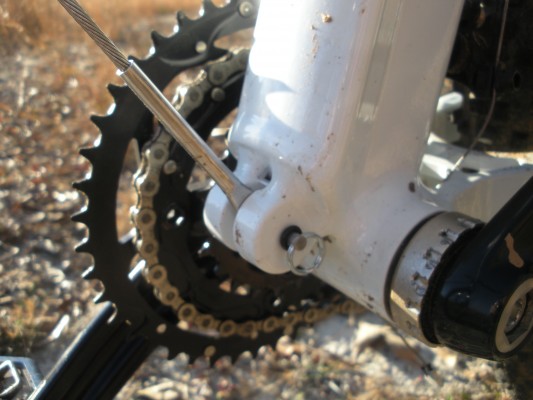
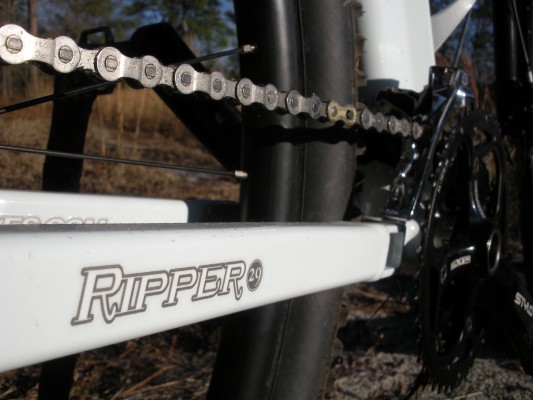

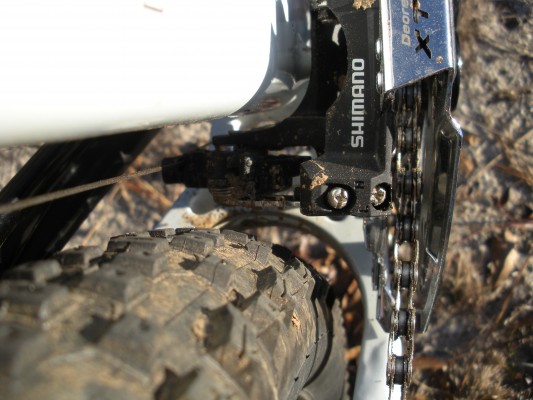










13 Comments
Jan 30, 2012
Suspension fork - yes, you can use one, and most folks do I think. I'm actually happy they sent this one with the rigid though. I have the same fork on my singlespeed, so I'm very familiar with how it rides. And having no suspension means I'll get a better feel for the frame itself, and what the cable/spring/flexboard are doing.
Weight - you're right, the cable doesn't save any weight, it actually adds some. The cable itself is lighter than a tube, but after you beef up the rest of the frame to compensate for the missing tube you end up gaining weight. I was told this frame weighs in around 5.3lbs (it's a size large). With a suspension fork this bike would be a little north of 28lbs.
Jan 31, 2012
Jan 30, 2012
Jan 30, 2012
Jan 30, 2012
Feb 5, 2012
Jan 30, 2012
Jan 31, 2012
Jan 31, 2012
Jan 30, 2012
So the cable/spring configuration is all about energy storage and return, not suspension? Does the bike offer any effective rear travel at all?
I'm surprised your build came with a rigid fork - is it possible (or advisable) to build it up with a suspension fork?
Based on the weight of your build, I'm guessing the cable doesn't do much in terms of lowering the overall frame weight. Still, looking at the bike I would think that would be an advantage - eliminating a tube and replacing it with a lightweight cable.
Seems like this is one of those bikes you gotta ride before you can have an opinion about it...
Jan 30, 2012
Jan 31, 2012
BUT, they do make a folding model! http://www.slingshotbikes.com/mountain-foldtech.php
Jan 30, 2012